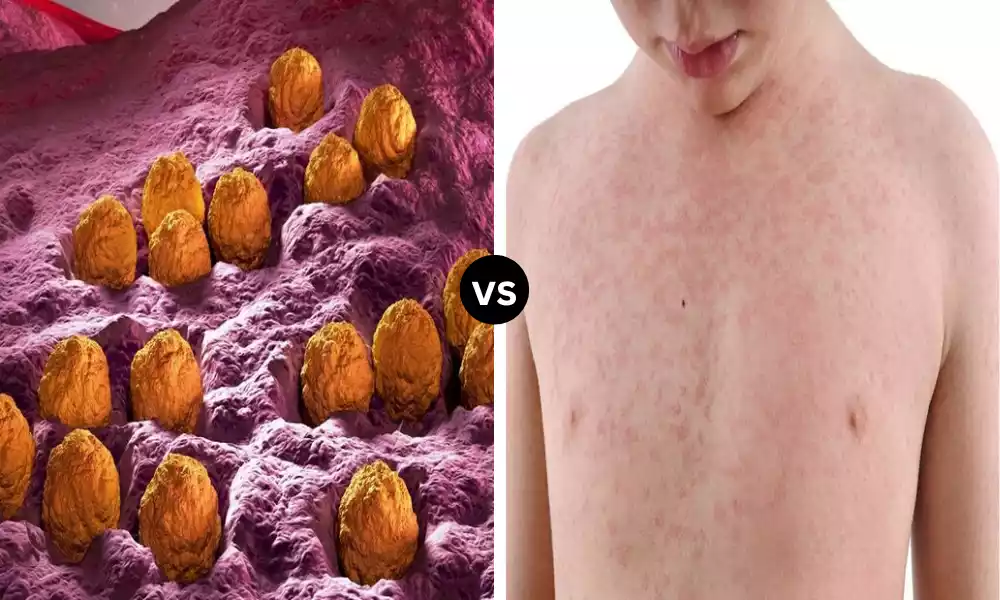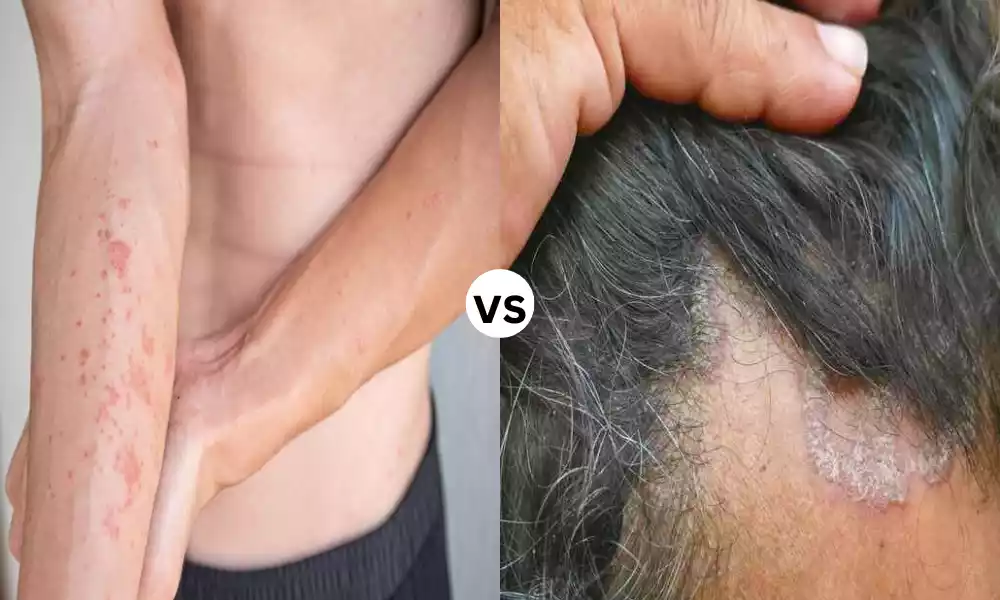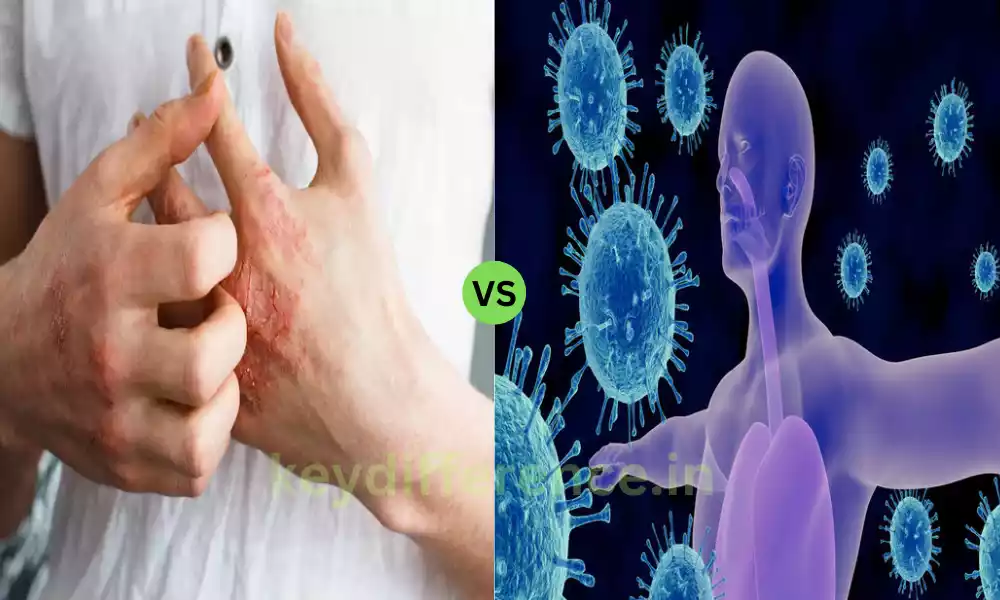Rubella and Rubeola are often known as German Measles and Measles respectively are two viral diseases that share a few similarities in symptoms, but are caused by distinct viruses.
They have distinct characteristics and may cause a variety of complications. Understanding the distinct features of these two diseases is vital to ensure a proper diagnosis and preventative and effective public health interventions.
We will examine the major differences between Rubella as well as Rubeola to help shed light on these often misunderstood ailments.
Definition of Rubella
Rubella and Rubeola commonly called German Measles and Measles respectively are two viral diseases that share some similar symptoms, but are caused by distinct viruses. Each has distinct characteristics and could cause a variety of complications.
Knowing the difference between the two diseases is vital to ensure a proper diagnosis and preventative and efficient public health strategies. In this short overview, we will examine the main differences between Rubella as well as Rubeola to provide clarity on these misunderstood ailments.
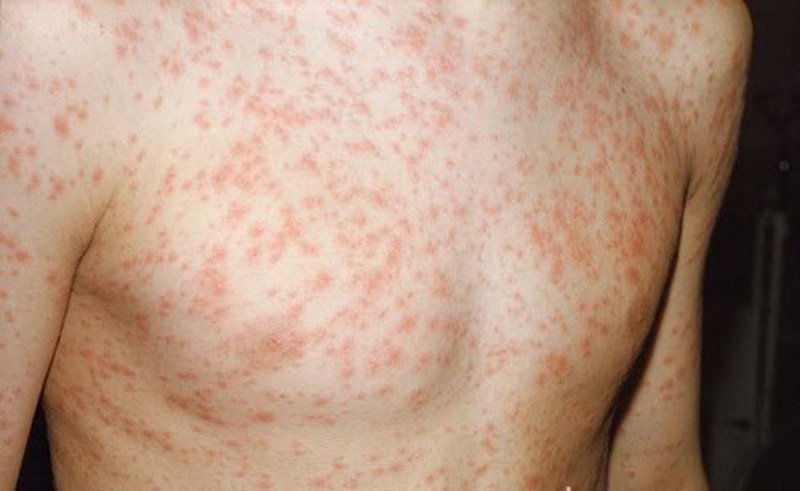
Definition of Rubeola
Rubeola often referred to as Measles is a contagious virus infection that is caused by Measles virus. It’s characterized by a distinct skin rash that is red or reddish brown.
It generally appears on the face but later spreads to different parts of the human body. Measles is associated with many symptoms that include cough, high fever running nose, and watery eyes.
This virus could cause serious complications like pneumonia as well as encephalitis (inflammation in the brain) and, in extreme instances, death. Measles can be prevented by vaccination. Mass vaccination campaigns have proved successful in reducing the incidence across a variety of regions.
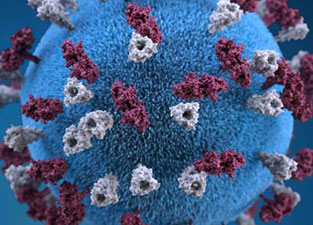
Comparison Table of Rubella and Rubeola
Here’s a comparison table highlighting the key differences between Rubella (German Measles) and Rubeola (Measles):
| Characteristic | Rubella (German Measles) | Rubeola (Measles) |
|---|---|---|
| Causative Agent | Rubella virus | Measles virus |
| Transmission | Airborne droplets | Airborne droplets |
| Incubation Period | 14-21 days | 10-12 days |
| Rash Characteristics | Pink or light red spots | Red or reddish-brown rash |
| Symptoms | Mild symptoms in most cases, including low-grade fever and rash | High fever, cough, runny nose, red, watery eyes, and a more severe rash |
| Complications | Congenital Rubella Syndrome (if contracted during pregnancy) | Pneumonia, encephalitis, ear infections, and other serious complications |
| Severity | Generally mild in healthy individuals, but can be severe for pregnant women’s unborn babies | Can be severe, especially in young children and unvaccinated individuals |
| Vaccination | Rubella vaccine (part of MMR or MMRV vaccine) | Measles-Mumps-Rubella (MMR) vaccine |
| Global Impact | Less widespread due to vaccination efforts | Outbreaks can occur, especially in areas with low vaccination rates |
| Prevention and Control | Vaccination, isolation of infected individuals, and public health measures | Vaccination campaigns, quarantine of cases, and herd immunity efforts |
This table provides a concise overview of the main differences between Rubella and Rubeola, helping to distinguish these two viral infections.
Importance of understanding the differences
Knowing the distinctions between Rubella (German Measles) and Rubeola (Measles) is vital for a number of reasons:
- Accurate diagnosis: Healthcare professionals must be able to accurately diagnose these conditions in order for proper medical treatment and care. Incorrect diagnosis can lead to ineffective treatments and potentially serious complications.
- Pregnancy Management: Rubella could cause serious birth defects when contracted during pregnancy, which is why it is crucial for women in the midst of pregnancy and women who plan on becoming pregnant, to understand the different risks. Knowing the risks can help healthcare professionals manage pregnancy more efficiently.
- Measures for public health: Knowledge of the differences between Rubella as well as Rubeola is vital for public health professionals. This knowledge aids in the application of effective measures to control the disease, which include vaccination campaigns as well as isolation protocols in the event of outbreaks.
- Vaccination Decisions: Individuals and parents should make educated decisions regarding vaccination. Knowing the different aspects of these diseases can help make more informed choices about immunizations for children and parents.
- Infection Prevention: Different diseases may require different infection prevention measures. For instance, the protocols for isolation in the case of Rubella and Rubeola can differ, therefore healthcare facilities should be aware of what disease they’re fighting to avoid the spread of.
- Monitoring of Epidemiological Risks: Tracking and monitoring of disease outbreaks is crucial in stopping the spread of these diseases. Achieving accurate reporting and tracking relies on the ability of healthcare professionals to differentiate from Rubella as well as Rubeola cases.
- R&D: Understanding the unique characteristics of each illness is vital to continue research into treatment, prevention, and the possibility of future outbreaks.
- Education Awareness: The raising of public consciousness of these illnesses and their variations will help to decrease the stigma and anxiety of these diseases. It also can encourage people to seek out timely medical treatment and vaccination.
Understanding the difference between Rubella as well as Rubeola is vital for a correct diagnosis, efficient disease management, well-informed vaccination choices, and the enactment of the appropriate actions for public health.
It plays a vital part in preventing the spread of these illnesses and minimizing the negative impact on public health.
How are rubella and rubeola similar?
Rubella (German Measles) and Rubeola (Measles) are alike in a variety of ways, which may cause confusion.
Here are a few most important similarities between these two viruses:
- The Viral Root: Both Rubella and Rubeola are caused by viruses. Rubella can be caused by to Rubella virus, whereas Rubeola is caused by the Measles virus.
- Transmission: The two diseases are highly contagious, and they are transmitted through respiratory droplets in the air whenever a person infected coughs or sniffs. Contact with an infected person could also trigger transmission.
- Initial symptoms: In the early stages of both conditions, people might be afflicted with symptoms such as fatigue, fever, or general malaise. The non-specific symptoms may make it difficult to differentiate between the two diseases initially.
- Rash: It is the same for both Rubella and Rubeola causing a distinct rash, but how they appear is different. In Rubella the rash is comprised of light red or pink spots. In Rubeola it appears as a reddish brown or reddish rash.
- Systemic symptoms: Both infections can result in symptoms that are systemic, such as a sore throat, a swollen nose cough, and eyes that are red and watery.
- Contagious Time: Individuals infected with both Rubella and Rubeola can be infectious to other people before exhibiting the rash. They can transmit the virus even if they don’t display the typical rash, which increases the likelihood of transmission.
- Complications: While Rubella is generally less severe in healthy individuals, however, both diseases can result in complications. Rubeola is particularly susceptible to complications. It can cause serious complications like pneumonia, encephalitis, or the ear.
- Immunization: Vaccination is an effective method of preventing both diseases. The Rubella vaccine is part of the Measles-Mumps-Rubella (MMR) or Measles-Mumps-Rubella-Varicella (MMRV) vaccine, which also provides protection against Rubeola.
- World Impact: Both rubella and Rubeola are the subject of vaccination campaigns as well as eradication efforts to decrease their prevalence and impact on global health.
Although Rubella and Rubeola share a number of similarities. it is important to understand that they’re both result of distinct viral infections, have distinct incubation times, and could cause a variety of complications.
Rubella is of particular concern in pregnancy due to the possibility of congenital rubella syndrome (CRS) in babies who are not yet born and Rubeola has serious consequences for individuals of all age groups. Thus, a precise diagnosis and proper management are essential for both conditions.
What are the symptoms of rubella and rubeola?
Rubella (German Measles) and Rubeola (Measles) have some similar symptoms, however, there are distinct differences between these two diseases.
This article will provide a summary of the symptoms that are associated with each:
Symptoms of Rubella (German Measles):
- Rashes: One of the characteristic signs of rubella is the appearance of a skin rash. It usually starts on the face and expands to the limbs and trunk. The rash is composed of lighter or pink spots that can be itchy. It is usually present for three days.
- The Fever: Patients with rubella usually experience a moderate to mild fever that may be preceded by itching.
- General Discomfort: Many people who have rubella experience general discomfort and experience symptoms like headache, fatigue, and a mild ache.
- Tight Lymph Nodes: A few people suffer from swollen lymph nodes especially behind the ear and behind the head.
- The sore Throat and Runny Nose: Rubella can cause symptoms that are similar to those of a cold such as an irritable throat and a dry nose.
- Joint Pain: Joint discomfort, particularly for adults, is a possibility of a rubella-related symptom.
It’s important to keep in mind that rubella can be an unintentional illness. certain individuals might only have one rash, and not have any other symptoms. However, it is of special concern during pregnancy since it could cause congenital rubella disorder (CRS) for the unborn child and can result in serious birth defects.
Symptoms of Rubeola (Measles):
- The High Fever: Measles usually begins with a high temperature that can reach temperatures of 103-105 degrees (39-40.6degC).
- Cough: It is one of the causes of a chronic cough.
- Rough Nose: Individuals with measles typically have rooky or nasal congestion.
- Watery, red eyes (Conjunctivitis): Measles can cause red eyes, inflammation, and excessive tearing.
- Koplik SpotsThey are tiny white spots that have blue-white centers and a red-colored ring that may appear in the mouth prior to the eruption.
- Rashes: Measles is characterized by the appearance of a red or reddish-brown rash that starts on the face, and spreads to other parts of the body. The rash usually appears within a few days of when the fever has begun.
- Insensitivity to Light: Certain measles patients might be sensitive to sunlight (photophobia).
- Tiredness along with Malaise: Patients with measles usually feel exhausted and unwell.
- Complications: Measles can lead to serious complications, such as ear infections, pneumonia, and encephalitis (inflammation in the brain). These issues can be life-threatening.
It’s important to be aware that although both measles and rubella may have symptoms such as cough, fever, and a runny nose measles can cause the most severe complications and symptoms, which makes it a much more serious illness, particularly in children and those who are not vaccinated.
If you suspect you’ve contracted one of the diseases or were exposed to the two, seek medical attention right away and take appropriate precautions and isolation to decrease the chance of contracting.
What are the possible complications of rubella and rubeola?
Rubella (German Measles) and Rubeola (Measles) can cause a variety of problems, some of which can be severe or even life-threatening.
Below are the possible complications of each of these illnesses:
Complications of Rubella (German Measles):
- Congenital rubella Syndrome (CRS): The biggest concern associated with the case of rubella occurs when women who are pregnant get the virus. Rubella can cause CRS when the infection is discovered during pregnancy. CRS may cause serious birth defects in the fetus’s development, such as:
- Deafness
- Eye problems (such as glaucoma, cataracts, and glaucoma)
- Heart problems
- Intellectual disabilities
- Liver and spleen damages
- Birth weights that are low
- Microcephaly (small head size)
- Arthritis: Certain people, especially females of adult age, can suffer from joint pain and arthritis as a result of rubella. The symptoms of joint arthritis can last for several weeks or months.
- Thrombocytopenia: Rubella may cause an increase in the amount of platelets present in blood, a condition referred to as thrombocytopenia. This can cause bleeding issues.
Complications of Rubeola (Measles):
- Pneumonia: It can affect the body’s immune systems, causing patients more prone to secondary infections with bacterial which include pneumonia. Pneumonia is a frequent and life-threatening complication that can result from measles.
- Encephalitis: Brain inflammation (encephalitis) can be a serious measles complication that could result in neurological issues as well as seizures and, in certain instances permanent brain damage.
- Ear Infections: Measles can trigger middle-ear infection (otitis media) that can result in hearing loss particularly if untreated.
- Laryngitis and bronchitis: Inflammation of the airways, which includes bronchitis as well as laryngitis, may occur because of measles.
- Eye problems: The measles virus can cause eye problems, such as corneal ulcers and conjunctivitis, which can cause permanent blindness or vision loss.
- Subacute Sclerosing panencephalitis (SSPE): Although uncommon, SSPE is a severe and typically fatal complication from measles, which can affect the brain. It can occur years after the measles outbreak.
- Severe Dehydration: Measles can trigger diarrhea and fever which can lead to severe dehydration, particularly for children who are young.
- Compromised Immune System: Measles may weaken immunity for some while following the infection, which makes people more susceptible to diseases.
It’s crucial to know that although rubella may cause CRS, an extremely serious concern for pregnant women measles (Rubeola) is a serious complication in people from all age groups, but especially youngsters and those who suffer from weak immune systems.
Immunization against both rubella and measles is an efficient method to avoid these illnesses and their complications. If you suspect that you or someone that you know is exposed to either of these diseases and you are concerned, get medical attention immediately to evaluate and manage the situation.
How are rubella and rubeola diagnosed?
Rubella (German Measles) and Rubeola (Measles) are usually identified through a combination of medical history, clinical examination, and lab tests.
This article will provide an overview of the way the two diseases are diagnosed:
Diagnosis of Rubella:
- Clinical evaluation: Healthcare providers will evaluate the patient’s symptoms, and conduct a physical examination. The distinct rash that is caused by rubella is usually an important indication.
- Medical Histories: The patient’s medical background, including the status of vaccination and any recent exposure to people who carry rubella, could be a valuable diagnostic tool.
- Labor Tests: Even though evaluating the patient’s condition is crucial laboratory tests are usually employed to verify the rubella diagnosis in a definitive manner. The most commonly used tests are:
- Serology: The tests on blood can determine the presence of antibodies that are specific to Rubella virus. IgM antibodies are usually raised in the initial phase of the illness however, IgG antibodies can indicate previous virus infection or vaccination.
- The Polymerase Chain Reaction (PCR): This molecular test is able to detect the genetic component of the Rubella virus in swabs of throat or blood samples.
The importance of laboratory tests is especially important for pregnant women suspected of having rubella since confirmation of the diagnosis is vital to determine the likelihood of congenital rubella syndrome (CRS) for a baby who is not yet born.
Diagnosis of Rubeola (Measles):
- Diagnostic Evaluation: The healthcare professionals examine the patient’s symptoms, taking note of the typical cough, high fever as well as runny nose, and the appearance of a rash that is red.
- Health History: The information about the person’s history of vaccinations and recent exposure or travel to measles cases is essential in determining if measles is present.
- Lab Tests: The confirmation of laboratory tests is frequently required for a final measles diagnosis. The most important tests are:
- Serology: The tests for blood can identify measles-specific antibodies, such as IgM antibodies that suggest an outbreak of infection, as well as IgG antibodies that indicate immunity as a result of vaccination or previous infection.
- polymerase chain reaction (PCR): This molecular test is able to identify the genetic component that makes up the Measles virus in throat, blood, or urine samples.
Measles is a disease that can be reported in a variety of countries, which means that healthcare professionals must declare confirmed or suspected cases to health authorities. This helps to track outbreaks and helps implement control measures.
It is essential to seek medical treatment as soon as possible when you suspect that you may have measles or rubella, or if you’ve had contact with a person who has these illnesses.
A prompt diagnosis and proper treatment can prevent measles from spreading to other diseases and decrease the chance of complications. Furthermore, vaccination is an extremely effective way to protect yourself from measles and rubella making sure you are up to date with vaccines is essential.
Does the MMR vaccine cause autism?
There is no scientific evidence to support the claim that the Measles-Mumps-Rubella (MMR) vaccine causes autism. This myth was borne out of a false research paper released in 1998 by Dr. Andrew Wakefield.
His research, which claimed that there was a connection between an MMR vaccination and autism was widely discredited and the paper was ultimately withdrawn because of ethical violations and scientific wrongdoing.
Numerous studies and reviews carried out in the past, including thousands of young children have discovered no link between MMR vaccine and autism. MMR vaccine or autism.
The general consensus of the scientific and medical professions is that vaccinations, including MMR vaccine, including MMR vaccination, are secure and vital to public health to avoid deadly and life-threatening diseases.
The negative effects of the unsubstantiated belief that vaccinations are responsible for autism have been severe and led to a drop in vaccination rates as well as the emergence of vaccine-preventable illnesses.
It is crucial to base your decisions on reliable scientific research and an expert consensus when making decisions about vaccination. Vaccines are essential to stop the spread of diseases that cause infection and ensure people’s health as well as the health of communities.
Similarities Between Rubella and Rubeola
Rubella (German Measles) and Rubeola (Measles) are both viruses that have some similarities. These can result in confusion.
Here are a few most important similarities between these two diseases:
- Source of Viral: Both Rubella and Rubeola are caused by viruses. Rubella can be caused by to Rubella virus, and Rubeola is caused by the Measles virus.
- Transmission: These two illnesses are extremely contagious and are spread via respiratory droplets that are emitted by air when a person who is infected coughs or sniffs. Contact with an infected person may also result in transmission.
- Initial symptoms: In the early stages of both conditions, people might experience symptoms like fatigue, fever, as well as general malaise. These symptoms that are not specific can make it difficult to distinguish between the two conditions initially.
- Rash: It is the same for both Rubella and Rubeola resulting in a distinct rash, however, their appearance is different. In Rubella the rash is comprised of light red or pink spots. In Rubeola it is a red or reddish brown rash.
- Systemic Signs and Symptoms: Both infections can result in symptoms that are systemic, such as an upset throat, a cough, a runny nose, and watery, red eyes.
- Contagious Time: Individuals infected with both Rubella and Rubeola are infectious to other people prior to the appearance of the skin rash. This means that they are able to spread the virus even though they don’t show the characteristic rash, thus increasing the chance of transmission.
- Complications: Rubella is generally less severe in healthy people Both diseases can result in complications. Rubeola particularly can lead to severe complications, such as pneumonia, encephalitis, and infections in the ear.
- Vaccination: Vaccination is an effective way to prevent both diseases. The Rubella vaccine is part of the Measles-Mumps-Rubella (MMR) or Measles-Mumps-Rubella-Varicella (MMRV) vaccine, which also provides protection against Rubeola.
- Global impact: The two Rubella and Rubeola have been the focus of vaccination campaigns as well as eradication efforts to decrease their prevalence and impact on health worldwide.
Although Rubella and Rubeola have many similarities, it is important to understand that they’re both due to distinct virus strains, which have different incubation time frames and may cause a variety of complications.
Furthermore, Rubella is of particular concern in pregnancy due to the possibility of congenital rubella syndrome (CRS) in newborn babies and Rubeola may have serious effects in people of all different ages. Thus, a precise diagnosis and proper management are crucial for both diseases.
Reference Books
Certainly, here are some reference books on various topics that you might find valuable for research, learning, or general knowledge.
Please note that my knowledge is based on information available up to September 2021, so there may be more recent publications available:
Science and Medicine:
- “The Immortal Life of Henrietta Lacks” by Rebecca Skloot – Explores the story of Henrietta Lacks, the woman behind the HeLa cells, which have been critical in medical research.
- “Sapiens: A Brief History of Humankind” by Yuval Noah Harari – Offers a wide-ranging view of human history, from the emergence of Homo sapiens to the present day.
- “The Emperor of All Maladies: A Biography of Cancer” by Siddhartha Mukherjee – Traces the history of cancer treatment and research, from ancient times to modern breakthroughs.
Technology and Artificial Intelligence:
- “Artificial Intelligence: A Guide to Intelligent Systems” by Michael Negnevitsky – Provides an introduction to the concepts and applications of artificial intelligence.
- “Superintelligence: Paths, Dangers, Strategies” by Nick Bostrom – Explores the potential risks and benefits of superintelligent AI.
- “The Singularity Is Near: When Humans Transcend Biology” by Ray Kurzweil – Discusses the future of technology, including predictions about the singularity and human-machine integration.
History and Politics:
- “A People’s History of the United States” by Howard Zinn – Offers an alternative perspective on American history from the viewpoint of marginalized groups.
- “The Guns of August” by Barbara W. Tuchman – Examines the events leading up to World War I and the early days of the war itself.
- “The Art of War” by Sun Tzu – An ancient Chinese treatise on military strategy that remains relevant in various fields today.
Conclusion
knowing the distinctions between Rubella (German Measles) and Rubeola (Measles) is vital to making a correct diagnosis, prompt treatment, and efficient healthcare measures for the public.
Although these two infections share a few similarities like respiratory transmission and rash these are caused by different viruses and could result in a variety of complications.
Knowing the differences between them allows health professionals, individuals, and public health officials to make informed choices to promote vaccination and ultimately, stop from spread of these illnesses and their potentially serious effects.

